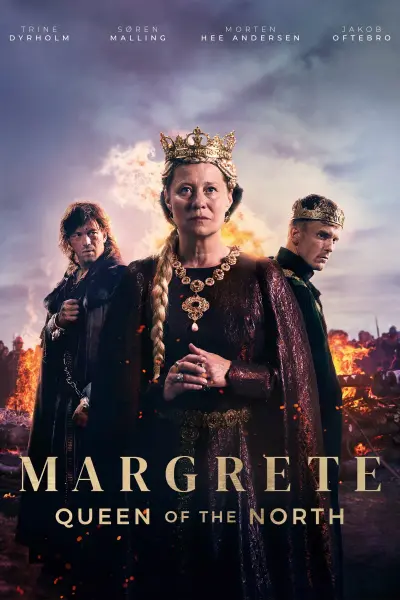
"Margrete: Queen of the North" stands as an evocative historical drama, masterfully encapsulating the complex interplay of politics and personal strife faced by a 15th-century Scandinavian ruler. Helmed by director Charlotte Sieling, the film weaves a fictionalized narrative of Queen Margrete, who is credited with the monumental achievement of uniting Denmark, Norway, and Sweden under the Kalmar Union. Set in the year 1402, the plot revolves around Queen Margrete, portrayed by Trine Dyrholm, as she confronts a staggering crisis: the emergence of a man from Graudenz, claiming to be her supposedly deceased son, Oluf. This unforeseen claim poses a significant threat to the delicately maintained balance of the union that Margrete has tirelessly labored to establish.
Central to the film's narrative is the theme of power and its intricate implications. Margrete, depicted as a formidable and committed sovereign, has devoted her existence to ensuring the tranquility and unity of the Scandinavian region. The film intricately explores her steadfastness in upholding this union amidst a labyrinth of internal and external challenges. The storyline adeptly interlaces Margrete's political acumen with her personal struggles, particularly emphasized by the contentious identity of the man claiming to be her son and the Machiavellian tendencies of her adopted son, Erik.
Furthermore, the film delves deeply into the dual aspects of Margrete’s identity as a mother and a leader. Her portrayal is richly layered, presenting her not merely as a monarch but as a mother grappling with the profound implications of her lost son's potential return. This emotional conflict lends a poignant depth to her character, rendering her decisions profoundly impactful and relatable.
The narrative artfully balances historical accuracy with creative storytelling, creating an enthralling saga of deception, loyalty, and ambition. The screenplay, a collaborative effort by Sieling, Maya Ilsee, and Jesper Fink, succeeds in vividly rendering the epoch, despite occasionally overlooking the development of secondary characters. The film's production, notably impacted by the coronavirus pandemic, is marked by remarkable cinematography and set design, effectively transporting the audience to the medieval Scandinavian world.
The reception of "Margrete: Queen of the North" has been varied. While some viewers have lauded its narrative depth, emotional resonance, and Dyrholm's stellar performance, others have critiqued its narrative pacing and the portrayal of ancillary characters. Nonetheless, the film is a significant contribution to cinema, spotlighting a pivotal era in Scandinavian history and the extraordinary woman at its helm.
In summation, "Margrete: Queen of the North" is a compelling fusion of historical drama and personal saga, offering a multi-layered depiction of a monarch’s relentless endeavor to foster peace and unity. It narrates the tale of the burdens of leadership, the intricacies of familial ties, and the unyielding commitment to a greater cause amidst daunting challenges. The film's enduring significance, much like the Kalmar Union it portrays, is a testament to the lasting influence of Margrete's reign on the tapestry of Scandinavian history.


